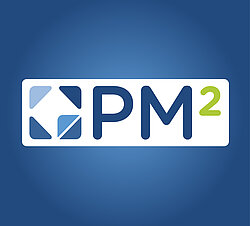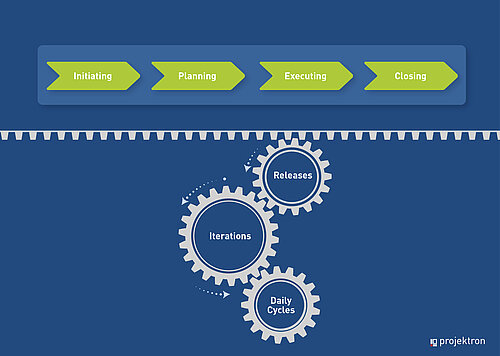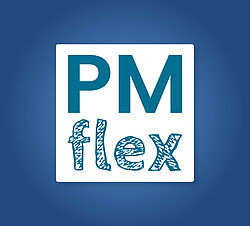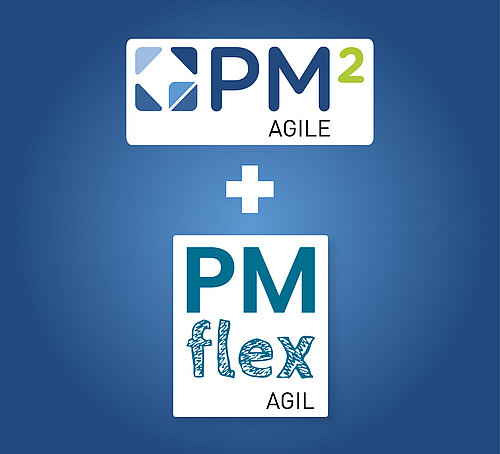10/30/2024 - Articles
PMflex Agile and PM² Agile: Flexibility and adaptability for dynamic projects
PM² Agile and PMflex Agil are two outstanding approaches that aim to make project management in the public sector more agile. PM² Agile integrates agile practices into the proven PM² project management framework of the European Commission, while PMflex Agil offers a holistic approach to agile project management that is specifically tailored to the needs of public administration.
Contents:
- PMflex Agile and PM² Agile in the public sector
- PMflex Agil
- Principles of PM² Agile
- Roles and responsibilities in PM² Agile
- Agile topics in PM² Agile
- Agile events in PM² Agile
- Agile artifacts in PM² Agile
- Agile tools and techniques in PM² and PMflex
- Software for PMflex Agile and PM² Agile
- The importance of agile methods in public project management
PMflex Agil and PM² Agile for dynamic projects in the public sector
In an increasingly dynamic world, characterized by constant change and growing demands, project management is facing new challenges – especially in the public sector. Flexibility, efficiency and the ability to respond quickly to changing needs are crucial here. Agile working methods play a central role in this development. They enable teams to adapt quickly and manage their projects effectively.
Applying PM² may require adjustments to meet the specific needs of a project. Given the complexity of many projects, an adaptive, hybrid, and agile approach may be necessary to respond flexibly to changes and achieve project goals.
PM²: A proven framework for successful project management in Europe
PM², the methodology developed by the European Commission, has established itself as one of the leading project management methods in Europe. It combines the best aspects of other methods, such as PRINCE2 and PMBOK, and adds specific elements tailored to the requirements of European projects. Find out why more and more organizations in Europe are turning to PM² to manage their projects efficiently and achieve the desired results. Discover how you can implement this methodology in your organization to ensure the success of your projects.
Agile methods can be seamlessly integrated into PM². The following elements are included in PM² Agile:
- Presentation of agile values and principles
- Agile role model with responsibilities
- Notes on dealing with certain topics in an agile context
- Notes on agile artifacts
- Description of agile tools and techniques
- Set of agile events
The project life cycle according to PM² consists of the four phases initiation, planning, execution and completion. PM² does not define any specific processes in the execution phase, so that the implementation of the project results can easily be carried out using agile methods. In addition to the phases, PM² Agile has iterative cycles at three levels, which occur particularly during the execution
- daily cycles
- iterations
- releases
PMflex Agile
PMflex is based on the European Commission's PM² method and combines this approach with elements of the S-O-S method from the (Large) Project Management Competence Center. Similar to PM² Agile, PMflex can also be supplemented with agile components to become PMflex Agil. The corresponding guideline was published in June 2023 by the (Large) Project Management Competence Center (CC GroßPM) for version 1.01 PMflex Agil. PMflex Agile is not simply a copy of PM² Agile, but an adapted and extended version that is specifically tailored to the needs of the German public administration. It is based on PM² Agile, but adds additional contextual adaptations and specific instructions that make it more relevant and useful for the German administrative sector.
However, the official guide was created based on the European Commission's PM² Agile Guide 3.0.1. The contents of the methodological additions are identical to the extent that the document only refers to PM² Agile. Accordingly, we will also focus on the PM² Agile variant in this article. However, the statements apply equally to PMflex Agil.
PMflex: flexible project management for public administration
PMflex offers an innovative solution for project management in the public sector that focuses on flexibility and adaptability. In this article, you will learn how PMflex helps to manage projects more efficiently and to better address the specific requirements of public administration. Discover how PMflex helps you to manage projects successfully and future-proof.
Principles of PM² Agile
The 12 principles of the Agile Manifesto are the lowest common denominator of all agile process models. PM² has adopted Agile with a few modifications:
- Satisfy customers by early and continuous delivery of valuable solutions.
- Changes to requirements are welcome.
- Regularly generate value through functioning solutions.
- Experts and the core project team must work together throughout the entire project.
- Bring together motivated employees and give them the environment and support to work in a self-organized manner.
- The most efficient and effective means of communication is the personal conversation.
- The most important measure of progress is the value and usability of what has been delivered.
- Likewise, constant attention must be paid to quality.
- Simplicity – the art of maximizing the amount of work not done – is essential.
- The team regularly analyzes how it can improve, and changes and adapts its behavior accordingly.
- Agile processes promote sustainable development.
- And last but not least, agile practices should be business-oriented.
Roles and Responsibilities in PM² Agile
PM² defines roles such as project owner, requirements manager, solution provider and project management. PM² Agile extends this structure to include new roles such as team coordinator, product owner, system architect and agile team members.
- Team Coordinator: Acts as a moderator and team coach in the agile team to promote focused work and goal achievement.
- Product Owner: Represents the concerns of customers and end users by being their voice in the project and prioritizing the work items with the greatest customer value.
- System Architect: Responsible for architectural decisions in the agile core project team in IT projects and supports the creation of the solution design.
- Agile team members: Focus on creating the solution for the stakeholders and have interdisciplinary skills.
- Other agile roles: Additional roles can join the agile core team on a temporary basis to address specific challenges.
The roles of the project manager and requirements manager change due to the introduction of new roles such as the product owner and team coordinator, as well as due to the self-organization of the development teams:
In agile projects, the project management, together with the team coordinator, assumes responsibility for adhering to the methodology, with the team coordinator being specifically responsible for the agile aspects. The role of the project management shifts to a greater focus on solving problems and obstacles in the project, since agile teams work in a self-organized manner. Furthermore, the product owner takes responsibility for managing stakeholder expectations, while the project management only intervenes when necessary to resolve discrepancies.
The role of the requirements manager is significantly expanded in agile projects because the product owner acts as the permanent “voice of the customer”. This means that the requirements manager is more involved in the project and must actively participate in the iteration review to validate the development team's results. In addition, the requirements manager and the product owner work closely together to effectively coordinate the authority declaration and implementation.
Agile topics in PM² Agile
PM² Agile requires adjustments to project management concepts and practices compared to traditional PM² projects due to the different values and principles of agile approaches. These adjustments are summarized in various “themes” that must be considered in the context of agile project management.
- One central component is Lean UX, which emphasizes the importance of rapid prototypes, shared understanding, and continuous improvement. In contrast to classic projects, which work towards a clearly defined end result, Lean UX relies on flexibility.
- Another important topic is planning, which requires more effort in agile projects. Effective planning, including work item lists, effort estimates, and stand-up meetings, is crucial to project success.
- Adjustments in the area of coordination and reporting are necessary to ensure efficient communication and coordination within the team. Agile practices have their own terminology, rituals and metrics to facilitate team collaboration and meet the information needs of stakeholders.
- Requirements play a crucial role in agile projects, especially when requirements are unclear or frequently changing. Agile approaches offer a better solution here compared to pre-defined planning approaches.
- Other topics, such as estimation and prioritization, risk management, quality assurance, evolution and change, architecture, compliance and security, as well as development, software configuration management, testing, deployment and rollout, also require specific adaptations and measures to ensure the success of the agile project and meet stakeholder requirements.
Agile Events in PM² Agile
In PM² Agile, the system is continuously developed in CIR-rhythm, which stands for “Coordinate, Implement, Review”. All aspects of the system are processed in each cycle.
- Coordinate: There are three events that serve this purpose: iteration planning, daily stand-up meetings and release planning. These help to organize the team and plan the work.
- Implement: The focus here is on creating the solution itself. There are no special events, as this task is carried out continuously throughout the project.
- Review: Activities and events focus on evaluating the effectiveness of the developed solution. Two main events are the iteration review and the iteration retrospective.
Iteration planning aims to create a plan for the next phase based on team capacity and available resources. The Daily Stand-up is used for daily communication and an overview of project progress. Release Planning discusses changes that may affect the solution strategy.
The iteration review assesses whether the iteration goals have been achieved by demonstrating the team's work and receiving feedback from stakeholders. The retrospective captures the experiences from the iteration and makes recommendations for future improvements. It is recommended that this feedback be continuously collected and implemented throughout the project.
Agile artifacts in PM² Agile
- Two artifacts are created during the initiation phase: the system architecture overview provides an overview of the planned software architecture, while the business model describes aspects of the architecture, in particular the system infrastructure.
- Four artifacts support the planning phase: The development manual contains important control processes and project guidelines. The development work plan contains the work element list, the release plan and the iteration plan. The test plan describes the test objectives, scope and required resources. The provisioning plan defines how the information system will be provided, operated and managed.
- Execution phase: Here, the development status report and various logs are used to document and communicate the state of development. Area-specific risks, problems, decisions and changes are recorded in project logs.
- Closing phase: An project close-down report is also created in the agile project. This contains experiences and recommendations for the time after the project, such as for follow-up systems or extensions.
Agile tools and techniques in PM² and PMflex
PM² Agile uses typical tools and techniques from agile contexts to increase agility and improve quality in product development, for example:
Teamwork assessment | It is based on the five dysfunctions of a team, as described by Patrick Lencioni. This assessment enables leaders to identify and overcome obstacles to building an effective and high-performing team. It focuses on the strengths of team members and identifies areas for improvement in the building blocks of a successful team: trust, conflict management, commitment, accountability and results. |
Self-organized teams | Self-organized teams can respond quickly to changes and make decisions. This process requires continuous encouragement and support from managers in order to create the conditions for successful work. The development towards self-organized teams requires joint efforts at different levels of the organization. |
Design Blocks | Design blocks are workshops within an iteration that aim to define the requirements for a feature or the work items for the next iteration. Based on design thinking techniques, assumptions are reviewed and a low-fidelity prototype is created. Moderated by a UX specialist, design, interaction, requirements and technical aspects are discussed and agreed upon. Once the team is convinced, a high-fidelity prototype is created, which serves as the basis for the code creation. |
Features and Storys | Features and stories are methods of expressing requirements for a solution. Features describe larger functions, while stories represent smaller segments of them. Features are more complex and take longer to implement than stories. Therefore, features are broken down into smaller stories that can be implemented in iterations. Stories enable incremental development and rapid value delivery for stakeholders. They help teams integrate feedback in short iterations and efficiently manage project scope. |
Decomposing user stories | User stories should be of a reasonable size to allow for efficient estimation, prioritization, and development within an iteration time frame. Smaller user stories improve design, which in turn increases maintainability and scalability. They also allow for easier response to change and reduce risk by decreasing uncertainty. In addition, smaller stories move through the implementation process faster, accelerating delivery and reducing wait time. |
Definition of Done | The Definition of Done (DoD) determines when a work item is considered complete, based on predefined criteria. It is the result of discussions and agreements within the development team about the meaning of “done” for their project. The DoD contributes to quality assurance and reduces the risk of problems in later project phases. |
Planning Poker | A method in which a team jointly estimates the relative scope of development goals. The aim is to use consensus-oriented decision-making to efficiently achieve agreement without spending an excessive amount of time. This technique offers team members the opportunity to express their opinions, thoughts and concerns. Planning Poker is preferably used in workshops to refine priority work tasks and to estimate the associated effort. |
Kanban-Method | It makes it possible to visualize the production process and workflows and reduce the inventory of unfinished products. Using cards on a board to visualize what should be produced when, or which feature needs to be added at which point in time. Unlike the push method, where waste in inventory builds up in the production process, Kanban uses the pull principle, where each step notifies the upstream step when it is ready to produce. This results in fewer errors, faster completion, lower risk, and greater visibility and transparency. |
Burndown-Charts | As graphical tools that track progress in an agile project, they show how planned and measurable elements (e.g. hours worked or story points) are processed by the end of a project or iteration. This helps them identify obstacles that could affect team performance. Since the planned work can change as a result of feedback during development, burndown charts are dynamic. The project core team and the entire organization can transparently track current progress and forecasts using the burndown chart. |
Test-driven development | Test-driven development (TDD) is a practice in which developers create tests and implementation code simultaneously and with a high degree of granularity. The process begins with writing a small test case, followed by its execution to ensure that it fails (sanity check). Then, only enough implementation code is written to successfully pass the test. This cycle usually takes less than ten minutes and always starts with writing tests. TDD enables small steps in software development, which is safer and more productive than programming in large increments. |
Pairing | Pairing allows two team members to work together on an activity. It enables immediate real-time review of work and improves the quality of deliverables as the two colleagues discuss and explore how best to accomplish the task at hand. |
Projektron BCS: The ideal software for PMflex Agil and PM² Agile
Projektron BCS is the ideal platform for comprehensively mapping the specific requirements of PMflex Agil and PM² Agile. The software is characterized by its open-method flexibility, which makes it possible to seamlessly integrate agile principles and traditional approaches. With Projektron BCS, teams can take full advantage of agile methodologies by taking advantage of features such as flexible scrum and kanban boards, detailed role management, and comprehensive requirements management.
Projektron BCS's agile role management allows you to define specific roles such as product owner, scrum master, and agile team members and to clearly manage their responsibilities. At the same time, Projektron BCS makes it possible to adapt to specific requirements and comply with standards such as PMflex Agile and PM² Agile by providing iterative work cycles, flexible backlogs, and integrated reporting tools.
Another highlight is Projektron BCS's ability to combine both agile and traditional approaches within a single project into a hybrid methodology. This offers a great deal of freedom in project planning and execution, which is particularly advantageous for complex projects in the public sector. Extensive security features and access controls ensure that compliance and security requirements are met.
Experience for yourself how Projektron BCS can take your agile projects to the next level. Start your free trial now and see for yourself the wide range of possibilities offered by this powerful project management software.
PM² Agile and PMflex Agile: The importance of agile methods in public project management
PM² Agile and PMflex Agil represent two essential approaches to successfully meeting the challenges of modern project management in the public sector. Both methods offer the necessary flexibility and adaptability required in an increasingly dynamic and complex work environment. PM² Agile integrates agile principles into the established PM² framework of the European Commission, making it possible to combine the advantages of agile working methods with the proven structures of PM².
PMflex Agile goes one step further by being specifically tailored to the requirements of the German public administration, thus providing an even more precise solution for local projects. Both approaches promote an agile mindset that enables teams to respond quickly to change, increase efficiency and ultimately achieve project goals. This underscores the growing importance of agile methods in public project management, which not only increases the adaptability of organizations but also their ability to operate successfully in the long term.

About the author
Kai Sulkowski is an editor in the marketing department of Projektron GmbH and is deeply involved with current trends and developments in project management. Through his research and engagement with PM², PMflex, PM² Agile and PMflex Agil, he has developed a thorough understanding of the methods, which enables him to convey complex concepts in a practical and understandable way.
More interesting articles on the Projektron blog
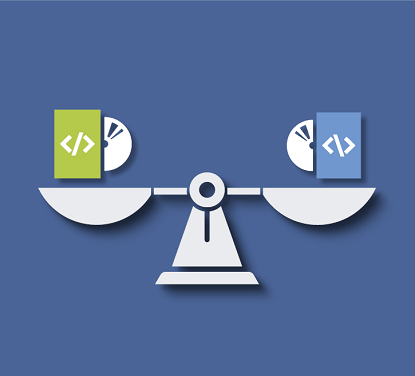
Project management software comparison
Get an up-to-date overview: We compare 15 of the most popular and best project management software solutions. Start here, discover the market and compare for yourself!
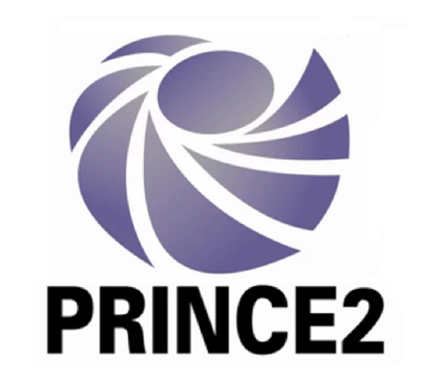
PRINCE2 in project management
PRINCE2 is a process-oriented PM method, can be scaled and places the benefits of a project at the center of project management. Our specialist article provides an introduction to the basic idea, strengths and weaknesses of the PRINCE2 method.
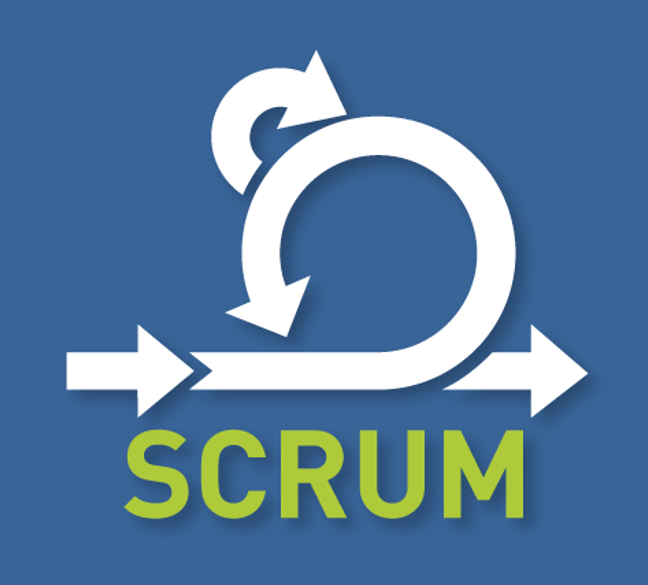
Scrum in software development
When it comes to agile software development methods, there is one term you cannot avoid: Scrum. But what exactly is Scrum and how does it develop its strengths in software development?

Hybrid PM
Classic or agile? If the decision between these two approaches is difficult, a combination of two or more project management methods is probably the right way to go. Find out everything you need to know about hybrid project management in this article.
